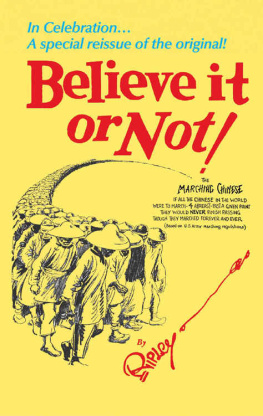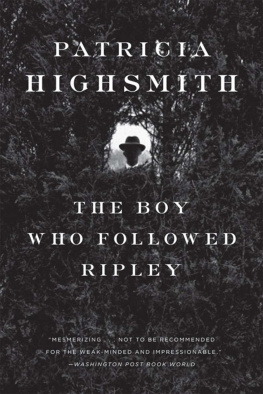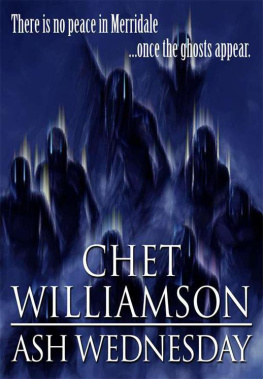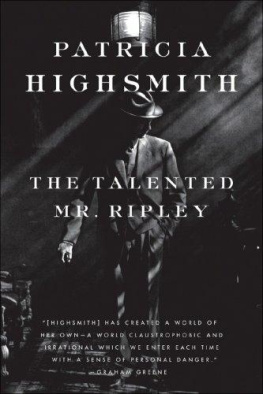2017 University of South Carolina
Published by the University of South Carolina Press
Columbia, South Carolina 29208
www.sc.edu/uscpress
25 24 23 22 21 20 19 18 17
10 9 8 7 6 5 4 3 2 1
Library of Congress Cataloging-in-Publication Data
can be found at http://catalog.loc.gov/
ISBN 978-1-61117-754-1 (cloth)
ISBN 978-1-61117-755-8 (ebook)
Front cover illustration by Brock Henderson; Portrait of General Roswell S. Ripley C.S.A., provided by the Massachusetts Commandery of the Loyal Legion Collection, U.S. Army Military History Institute, Carlisle Barracks, Pa.
PREFACE
I first heard of Roswell Ripley in April 1961 while attending the College of Medicine at Ohio State University in Columbus, Ohio. It was the centennial of the Civil War, and I learned that Ripley, a Confederate officer born in the Columbus suburb of Worthington, was in command of the artillery at Fort Moultrie. Ripleys artillery fired on Sumter at the onset of the hostilities in that terrible conflict. I wondered how that came about, but over time Ripleys role slipped to the back of my mind.
Nearly thirty years later, in 1990, while researching my maternal South Carolina genealogy, I discovered that my great-grandfather, Private Gardner Lytle Davis, served with Company A, 1st South Carolina Artillery, and that his commanding officer was General Roswell S. Ripley. Believing Gardner must have at least known of Ripley, I wanted to learn more about this Ohioan and why he fought for the Confederacy. My paternal great-grandfather John Bennett, from Guernsey County, Ohio, was too young to serve. However, his brothers, David and Daniel, incredibly served on Folly Island with Company G, 62nd Ohio Volunteer Infantry, and the assaults on Battery Wagner.
Living in central Ohio, I thought it would be fairly easy to discover information about Ripleys early years. Worthington officials had erected a sign in front of Ripleys birthplace, a small brick house now painted white. A white wood sign at 623 High Street identified the Ripley House but with no explanation of who Ripley was or why his birthplace was recognized. On September 26, 2004, through the efforts of the Brigadier General Roswell S. Ripley Camp 1535, Sons of Confederate Veterans, and the United Daughters of the Confederacy, an Ohio historical marker recognizing Ripley was approved and erected on the site.
No one at the Worthington Historical Society knew much about Ripley, and they referred me to a nine-page paper, Worthingtons Confederate General, written by former mayor Richard T. Savage. Published in 1961, and although not an in-depth study, Savage presented a rather sympathetic view of Ripley, stating his belief that more should be known about General Ripley, at least in the community where he was born.
I soon determined that no one had ever written a biography of Ripley, but I did learn that in 1963 Charles Martin Cummings received a doctorate in American history from Ohio State University for his dissertation, Seven Ohio Confederate Generals: Case Histories of Defection. The amount of research Cummings conducted in completing his study is impressive. Although he hesitated to refer to the seven men as traitors, the subtitle of his dissertation indicates his bias against them. He minimized the fact that none of these men were in the U.S. Army at onset of the war. All had left Ohio years before the war, and their homes, families, and businesses were located in the South. Cummings contended that significant character flaws led to their defection.
Ohio historical marker, Worthington, Ohio, for Brigadier General Roswell Sabin Ripley, C.S.A. Authors photograph.
Cummings was viciously critical of Ripley. He minimized positive assessments, emphasized the most negative, and at times took quotations out of context to disparage Ripley. Cummings included photographs of the seven generals; all but Ripley are photographed in their Confederate uniforms and captioned with their name and rank. Cummings printed the most unflattering image of Ripley in existence. It is a postwar photograph of him in a business suit captioned, Roswell Sabin Ripley, Business Failure. Later the Ohio History magazine printed Cummingss condensed and more balanced version of his dissertation entitled Fruit of the Restless SpiritOhios Confederate Generals.
The brief biographical sketches found in volumes such as Stewart Sifakiss Who Was Who in the Civil War and Ezra Warners Generals in Gray are incomplete, especially lacking information concerning Ripleys life after the war. Clifford Dowdey in The Seven Days malevolently wrote, An opinionated man,
In contrast, many of Ripleys contemporaries described him much differently. According to Colonel E. M. Seabrook, a former staff officer, He always endeavored to bestow upon his subordinates, officers and men, the full measure of praise due to them. Confederate general Samuel G. French, a former classmate at West Point, stated, His cheerful presence dispelled all unnecessary solemnity. his generous and unselfish disposition formed friendships among his classmates that lasted through life. George C. Eggleston, who served in an independent battery in Charleston, commented, He was portly in person, commanding and almost pompous presence, and yet, when one came to know him, was as easy and unassuming in manner as if he had not been a brigadier general at all.
There are probably two reasons a biography of Ripley has never been written. First, the twenty years he spent in England after the war were difficult to research. Second, Ripley had been so denigrated by historiographers, South Carolinas Governor Francis Pickens, and General P. G. T. Beauregard that many writers would not have thought it was worth their time or effort.
The negativity toward Ripley began with Governor Francis Pickens. Pickens fancied himself an authority on military tactics and bombarded Ripley with recommendations regarding troop dispositions around Charleston. Finally, Ripley, not very tactfully, suggested that Pickenss interfering was not at all helpful and caused confusion and harm. Later Pickens retaliated in a letter to President Davis, claiming that Ripley said extreme things about Lee and feared Ripleys feelings toward Lee was calculated to do great injury to Lees command. It has never been documented what Ripley is alleged to have said, or if he said anything along those lines at all.
However, Douglas Southall Freeman, Lees biographer, became highly incensed and projected extreme things to a more serious level, claiming that for some unknown reason, Ripley took a violent dislike to Lee. In addition, Beauregards bitter diatribe against Ripley in the













